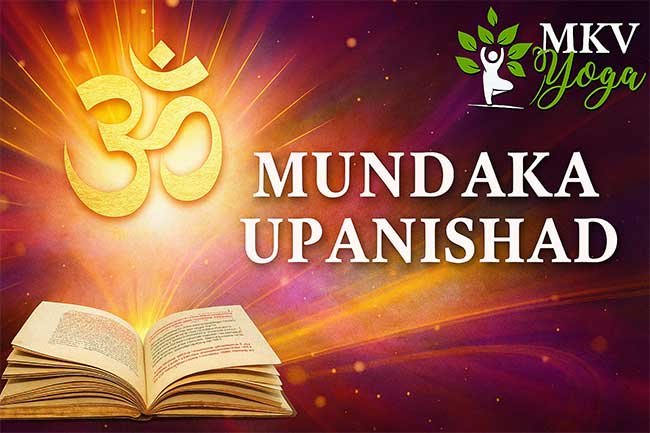The Mundaka Upanishad is one of the most profound and popular Upanishads from the Atharva Veda. It explores the highest form of knowledge – the realization of Brahman (ultimate reality) – and distinguishes between higher knowledge (Para Vidya) and lower knowledge (Apara Vidya). This timeless scripture guides seekers on the path of truth, self-realization, and liberation (moksha).
Through its poetic verses, the Mundaka Upanishad teaches us that the material world is temporary, and only the knowledge of the self leads to true freedom and eternal peace.t
Table of Contents
Overview of the Mundaka Upanishad
-
Belongs to the Atharva Veda
-
Divided into 3 sections (Mundakas) and 6 chapters
-
Explains Para Vidya (higher knowledge) vs. Apara Vidya (worldly knowledge)
-
Central theme: The realization of Brahman is the ultimate goal of life
The Two Kinds of Knowledge
The text distinguishes between:
-
Apara Vidya – knowledge of rituals, hymns, sacrifices, and worldly sciences.
-
Para Vidya – knowledge of the imperishable Brahman, the eternal truth.
Symbol of the Two Birds
A famous metaphor describes two birds sitting on the same tree – one eating the fruits (individual soul bound to karma), the other simply witnessing (the supreme self). This represents the relationship between Atman (soul) and Brahman (ultimate reality).
Importance of the Mundaka Upanishad
-
Teaches the futility of material wealth and rituals without self-realization.
-
Inspires seekers to move beyond temporary pleasures.
-
Offers practical wisdom for meditation and inner peace.
-
Quoted in many spiritual traditions and philosophies, including Vedanta.
The Mundaka Upanishad is not just a scripture but a spiritual roadmap. It teaches us to rise above ignorance and seek the eternal truth. By distinguishing between higher and lower knowledge, it urges us to focus on what truly matters – self-realization and union with Brahman.
In today’s fast-paced world, the wisdom of the Mundaka Upanishad helps us rediscover inner peace, clarity, and the ultimate goal of human life – liberation.
FAQs on Mundaka Upanishad
Q1. What is the central message of the Mundaka Upanishad?
👉 The central teaching is that self-realization and the knowledge of Brahman alone lead to liberation, not rituals or worldly pursuits.
Q2. Why is it called the Mundaka Upanishad?
👉 “Mundaka” means “shaved head,” symbolizing renunciation. It is meant for those who seek liberation through higher wisdom.
Q3. How many chapters are in the Mundaka Upanishad?
👉 It has 3 sections (Mundakas) divided into 6 chapters.
Q4. What is the two birds story in the Mundaka Upanishad?
👉 It symbolizes the individual soul (enjoying karma) and the supreme self (witnessing), showing the path from ignorance to realization.
Q5. How can we apply Mundaka Upanishad teachings in daily life?
👉 By practicing detachment, meditation, and focusing on the eternal truth over material gain.
Mundaka Upanishad – Quick Summary
| Key Concept | Explanation |
|---|---|
| Origin | Belongs to the Atharva Veda |
| Structure | 3 Sections (Mundakas), 6 Chapters |
| Central Theme | Realization of Brahman (ultimate reality) |
| Higher Knowledge (Para Vidya) | Knowledge of the imperishable Brahman, leading to liberation (moksha) |
| Lower Knowledge (Apara Vidya) | Knowledge of rituals, hymns, sacrifices, and worldly sciences |
| Two Birds Symbolism | One bird eats fruits (soul bound by karma), the other observes (the supreme self) |
| Path to Liberation | Through renunciation, meditation, discipline, and the pursuit of eternal truth |
| Relevance Today | Teaches detachment from materialism, guiding towards peace and self-realization |
You may like to read –
Upanishads: The Eternal Wisdom of Self, Soul & Spiritual Awakening

